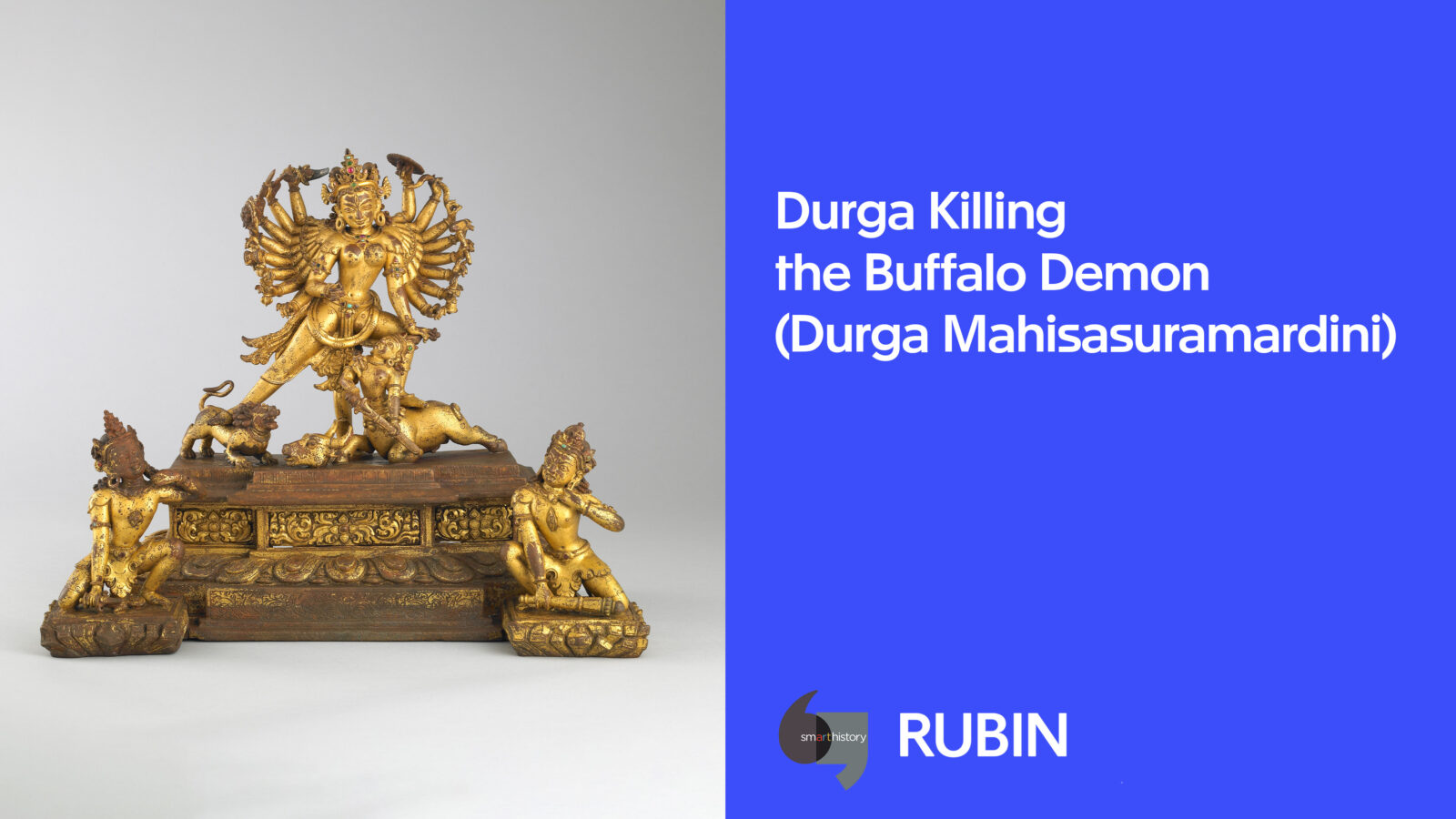Nepal
12th-13th century
Nepal
12th-13th century
The narrative of the Hindu goddess Durga—her assembling the weapons of all the gods and overcoming the demigod Mahisha, who endangered the order of the world—is represented here at the moment of her victory. Having chopped the bull’s head off, Durga pulls the body of the demigod from the animal by the hair and stabs him before he can even draw his sword. His two companions kneeling before her, their weapon-bearing arms dropped in defeat, have a vajra (left) and a disk (right) piercing their chests.This outstanding sculpture perfectly combines the dynamic with the static. The goddess’s powerful stance and fan of arms are balanced by her otherwise delicate features and calm expression. Her fan of arms is magnificently conceived of in three-dimensions, the natural positioning of each arm to her arched back is as if the arm is captured in a different position along an arc.

A kind of energy that can be used, individually and collectively, to effect change.
Prescribed practices that carry symbolic meaning and value within a specific tradition and are intended to attain a desired outcome. Rituals are usually done as part of a ceremony or regular routine.
Hindu gods (deva) are thought to be manifestations of the absolute, or Brahman. The goddesses (devi) are considered manifestations of the Great Mother Goddess (Mahadevi), who is seen as the counterpart to Brahman.
The Himalayan kingdoms of the Kathmandu Valley were significant centers of Buddhist culture. Nepalese kings, Buddhist institutions, and ordinary people patronized the vibrant art guilds. The artistic traditions of the regions are well-known in Tibetan areas and beyond, and Newar artists have always been in high demand throughout Tibetan regions and Inner Asia.
Get the latest news and stories from the Rubin, plus occasional information on how to support our work.